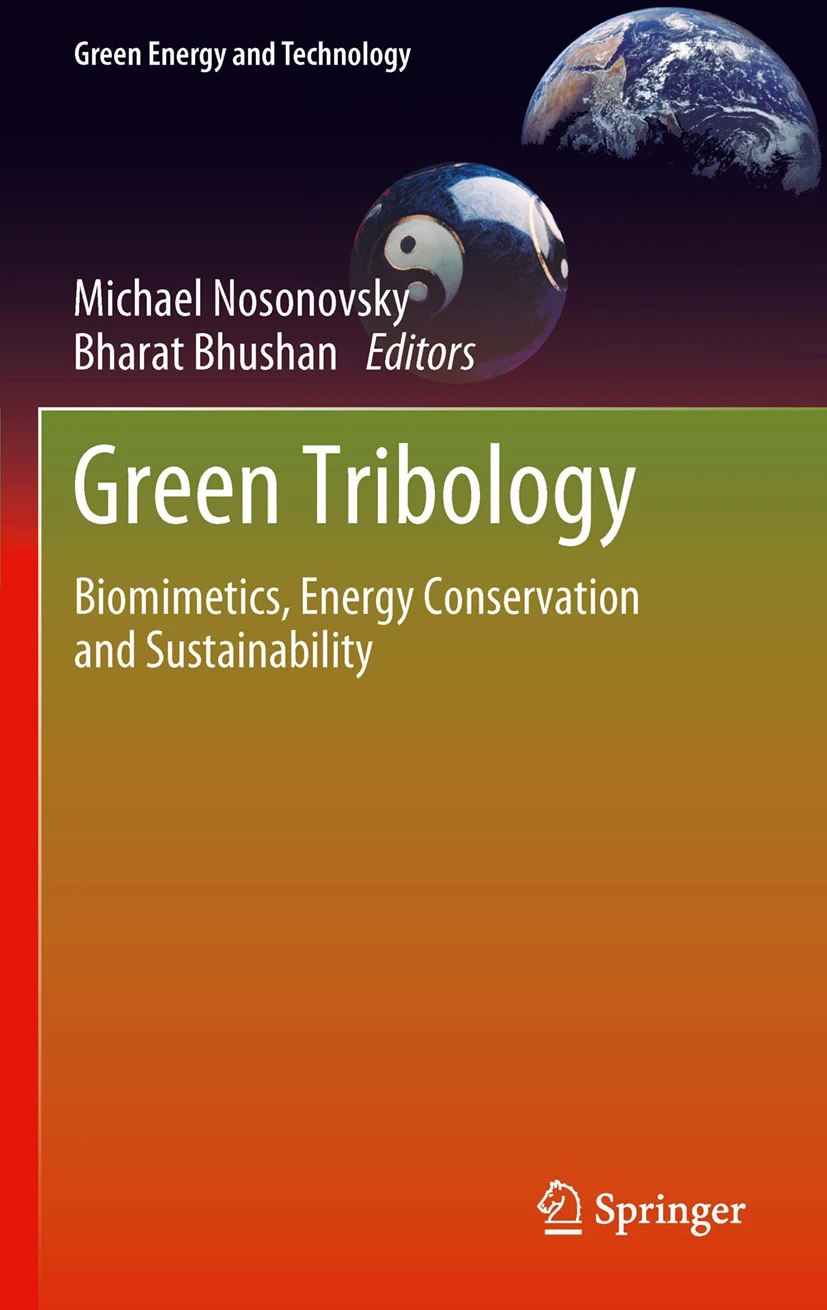In 2010, Professor Nosonovsky, together with Prof. Bhushan, published the first scientific book on Green Tribology and the first theme issue of the Philosophical Transactions of the Royal Society (a very prestigious, oldest scientific journal in the world, where Newton, Franklin, Darwin and other great scientists of the past published their work). Green Tribology (or eco-tribology) is a new area of surface engineering which combines biomimetic tribology, “green” (eco-friendly) lubrication, and tribology of clean energy (e.g., wind energy).
Dr. Nosonovsky also formulated the fundamental “Twelve Principles of Green Tribology.” These are widely used today by various researches. Conferences are organized, books and papers published. Below I listed some mentions of the “Twelve Principles of Green Tribology” in the current literature.
Researchers from Politecnico di Milano, Piazza Leonardo da Vinci:
“In 2010, Nosonovsky and Bhushan drew up 12 approaches based on the 12 principles of green chemistry and the 12 principles of green engineering, defining the “12 principles of green tribology.” This review exploits the 12 principles of green tribology to fathom the developed research related to sustainability and tribology. “
Marco Freschi et al., “The Twelve Principles of Green Tribology: Studies, Research, and Case Studies—A Brief Anthology”Lubricants 2022, 10(6), 129, https://doi.org/10.3390/lubricants10060129
Also:
Twelve Principles of Green Tribology, Scholarly Community Encyclopedia
“In “Green Tribology: Principles, Research Areas and Challenges” (https://royalsocietypublishing.org/doi/pdf/10.1098/rsta.2010.0200) by Nosonovsky and Bhushan discuss the three main aspects of tribology, biomimetic (synthetic methods that mimic biochemical processes) and self-lubricating surfaces and materials, environmentally friendly and biodegradable lubrications, and renewable/sustainable sources of energy. Building on these three areas, Nosonovsky and Bhushan developed the twelve principles of green tribology.”
“Principles of Green Tribology” TriboNet, 2019
Researchers from Bangladesh:
“The twelve goals of green tribology are as follow…”
T. Babu, M. Akter “Areas of green tribology: A review”, Tribology and Materials, Vol. 2, No. 1, 2023, pp. 38-45, https://doi.org/10.46793/tribomat.2023.004
Researchers from Afe Babalola University in Nigeria:
“To wrap things up, the 12 green tribology principles are displayed in Table 1”
J. F. Kayode, S. L. Lawal and S. A. Afolalu, “Overview of Green Tribology in Recent World: Fundamentals and Future Development,” 2023 International Conference on Science, Engineering and Business for Sustainable Development Goals (SEB-SDG), Omu-Aran, Nigeria, 2023, pp. 1-11, doi: 10.1109/SEB-SDG57117.2023.10124520″
Researchers from UC-Merced, Stony Brook and from Germany:
“Building on the basic structure of the three main areas of green tribology, twelve principles have been proposed” Tribology in Industry, Vol. 42, No. 4 (2020) 592-596, DOI: 10.24874/ti.987.10.20.11
Researchers from Canada:
“Later on, Nosonovsky and Bhushan (2010) provided twelve principles to define future prospects of green tribology”
V. Saini and S. Jha, “Aspects of green-sustainable tribology and its impacts on future product development” July 2019, Ecology Environment and Conservation 25 (July Suppl. Issue):S146-157
And many others!

